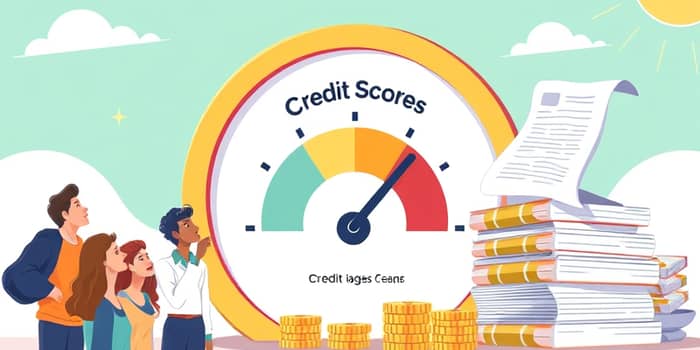
Your credit score is a powerful determinant when you seek a loan. Whether you’re buying a home, financing a car, or applying for a personal loan, your score can influence not only approval but also the cost of borrowing. By understanding how credit scores work, you can take proactive steps to strengthen your financial standing and secure the best possible terms.
This comprehensive guide examines the components of your credit score, ranges lenders use, the impact on approval rates and interest costs, and proven strategies to improve your score before you apply.
Credit scores typically range from 300 to 850 and provide lenders a snapshot of your overall credit history. The most widely used model is FICO, which breaks down as follows:
Knowing your score range helps set realistic expectations. Lenders often require a minimum score: conventional mortgages typically need 620+, while FHA loans may accept scores as low as 500 with a larger down payment.
Lenders evaluate credit scores to make two key decisions: whether to approve your application and what interest rates to offer. A high score can unlock better terms, whereas a lower score can limit your options or lead to outright denial. Even applicants with “good” credit (670–799) experience significant hurdles—45–48% of applicants with good credit report being denied at least once.
By improving your score, you not only increase the likelihood of approval but also access access to the best rates and terms, reducing your monthly payment and total borrowing cost.
Your credit score has a direct effect on the interest rate you pay. For example, a borrower with a score in the “good” range might secure a mortgage at 5% interest, while someone with “fair” credit could be quoted 7% for the same loan. Over a 30-year mortgage, that difference can translate into tens of thousands more in interest.
Lenders raise costs—through higher rates, insurance premiums, and fees—to offset the perceived risk of lower scores. This means borrowers with scores below 620 often pay significantly more over the life of a loan.
Your FICO score is built from five components. Understanding each can guide your efforts to improve:
Different loans impose varying score requirements. Mortgages generally demand higher scores than auto or personal loans:
- FHA loans often accept 580+, though scores of 500–579 require larger down payments.
- Conventional mortgages usually require at least 620, with the most competitive rates at 740+.
- Auto loans are somewhat more lenient but still price loans based on credit tiers.
- Personal loans and credit cards reserve their best offers for scores above 700, while subprime borrowers may face steep interest or denial.
While your credit score is critical, lenders also review:
Income and employment history: Stable earnings demonstrate repayment ability.
Debt-to-income ratio: Lenders want to ensure you can manage new payments alongside existing obligations.
Assets and collateral: Savings, investments, or property can bolster your application.
Strategic actions before you apply can yield immediate benefits:
Implementing these steps consistently can produce measurable score improvements within months, enhancing your loan approval prospects and terms.
Failing to manage your credit can result in severe financial setbacks:
Loan or credit card denials, increased interest rates, and the need for larger down payments or collateral become common obstacles. Over time, higher monthly payments and fees can strain your budget and limit your financial flexibility.
When you’re ready to apply, ensure you’re well-prepared:
Check your credit score before applying to avoid surprises and set realistic expectations.
Address any report issues or outstanding debts to present the strongest credit profile possible.
Budget for potential higher costs if your score remains below prime levels, including larger down payments and emergency reserves.
Speak with multiple lenders to compare offers and negotiate the best rates and terms for your situation.
By thoroughly understanding your credit score’s role and following these guidelines, you can approach the loan process with confidence, ultimately securing financing that aligns with your goals and financial capacity.
References













